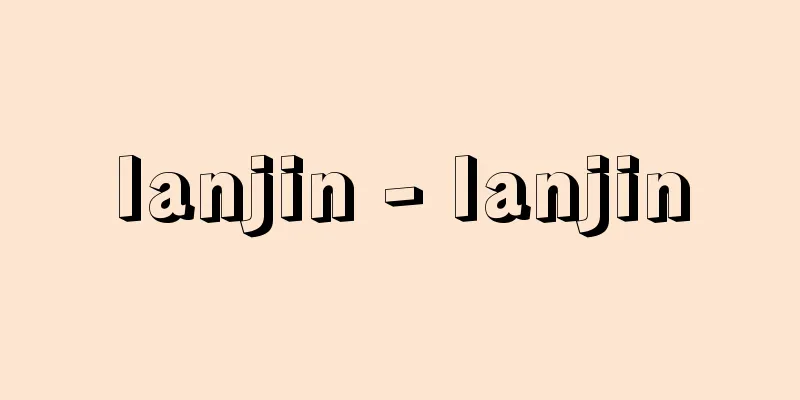Literary Revolution

|
A cultural and ideological innovation movement that unfolded in China from the late 1910s to the early 1920s. Its center was the magazine New Youth (originally Youth Magazine), which was launched in Shanghai in 1915, and in 1917 Chen Duxiu was invited by Beijing University's president Cai Yuanpei to become head of the university's Faculty of Arts and Sciences, at which point its editorship moved to Beijing. In addition to Chen, other editors and writers included Hu Shi, Li Dazhao, Liu Bannong, Qian Xuantong, Lu Xun, and Zhou Zuoren, many of whom were professors at Peking University, so Peking University seemed to be at the center of the movement. This movement advocated science and democracy as its ideals, and specifically, the reform of literature through colloquial language (vernacular) and criticism of Confucianism were its pillars. The former began with Hu Shi's "Ruminations on Literary Reform" (January 1917) and Chen Duxiu's "Theory of Literary Revolution" (February 1917), which followed on from Hu Shi's, and included the creation of prototypes of colloquial poetry, but it was the publication of Lu Xun's works, including "Diary of a Madman" (May 1918), that gave substance to it. Since "literature" was at the core of the cultural value system in old China, the reform of the style of writing itself, along with its content, had ideological and social significance. There was a movement to make Confucianism the state religion at the time, and many essays were written on Confucianism and the family system it supported, including Wu Yu's "An Argument for the Family System as the Basis of Despotism" (February 1917). These movements drew strong criticism from conservatives such as Lin Zheng and the magazine Gakukou, but they had a strong influence on young people and students, and the May Fourth Movement (1919) was born out of this. Furthermore, the foundations of modern literature were established with the founding of the Literature Research Association (1921) and the Creative Society (1922). Meanwhile, influenced by the Russian Revolution, there was a growing inclination towards Marxism, led by Li Dazhao, Chen Duxiu and others, and in 1921 the Chinese Communist Party was formed, but around the same time, Hu Shi and others strengthened their tendency to compromise with feudal forces through a reevaluation of the classics, and the mid-1920s saw a period of differentiation and reorganization of intellectuals. Nonetheless, the literary revolution was the first large-scale ideological and cultural movement after the Xinhai Revolution (1911), and it has remained the starting point of modern Chinese history, and the history of modern thought and literature, which is often looked back on ever since. [Noboru Maruyama] [Reference] |Source: Shogakukan Encyclopedia Nipponica About Encyclopedia Nipponica Information | Legend |
|
1910年代後半から20年代初頭にかけて中国で展開された文化、思想の革新運動。中心になったのは1915年上海(シャンハイ)で創刊された雑誌『新青年』(当初は『青年雑誌』)で、17年陳独秀(ちんどくしゅう)が北京(ペキン)大学長蔡元培(さいげんばい)に招かれて、その文科学長になったのに伴って編集も北京に移った。編集・執筆にあたったのは、陳のほか胡適(こてき)、李大釗(りたいしょう)、劉半農(りゅうはんのう)、銭玄同(せんげんどう)、魯迅(ろじん)、周作人(しゅうさくじん)らで、多くが北京大学教授であったため、北京大学がその中心の観を呈した。 この運動は理念としてサイエンスとデモクラシーを掲げ、具体的には口語(白話)による文学の革新と儒教批判を柱とする。前者は胡適「文学改良芻議(すうぎ)」(1917.1)およびそれを受けた陳独秀「文学革命論」(1917.2)などに始まり、胡適の口語詩の試作などが行われたが、『狂人日記』(1918.5)以下魯迅の諸作品が発表されて、実質が与えられた。「文」は旧中国における文化的価値体系の中枢をなすものであったから、その内容とともに、文体の改革自体も思想的・社会的意味をもった。儒教およびそれに支えられた家族制度には、当時儒教国教化の動きがあったこともあって、呉虞(ごぐ)「家族制度は専制主義の根拠たるの論」(1917.2)をはじめ、多くの論が書かれた。これらに対して、林紓(りんじょ)や雑誌『学衡(がくこう)』など保守派からの非難も強かったが、青年・学生層への影響は強く、五・四運動(1919)はそのなかから生まれた。また文学研究会(1921)、創造社(1922)の成立などによって、近代文学の基礎ができあがった。 一方ロシア革命の影響もあって、李大釗、陳独秀らを中心にマルクス主義への傾斜が強まり、21年中国共産党が結成されたが、それに前後して胡適らは古典の再評価を通じて封建勢力との妥協の傾向を強めるなど、20年代なかばにかけては、知識人の分化・再編成の時期を迎えた。が、とにかく文学革命は、辛亥(しんがい)革命(1911)後最初の大規模な思想・文化運動であり、その後も事あるごとに振り返られる中国現代史、現代思想・文学史の原点となっている。 [丸山 昇] [参照項目] |出典 小学館 日本大百科全書(ニッポニカ)日本大百科全書(ニッポニカ)について 情報 | 凡例 |
Recommend
Sadyattēs (English spelling)
...In the early 7th century BC, Gyges (reigned 68...
Fallot, É.LA (English spelling) FallotELA
…It is a type of congenital heart disease, and is...
Silene keiskei (English spelling) Silenekeiskei
… [Eiji Miki]. … *Some of the terminology explana...
Proculus, S. (English spelling) ProculusS
…He was of southern Italian descent and served as...
Furious
…In the 1910s, attempts were made to launch aircr...
Kinerokukai
…As of the end of 1983, 566 meetings had been hel...
Persimmon [Village] - Kakinoki
A town in Kanoashi County in the southwest of Shim...
Iori signboard
〘Noun〙 One of the signs at a Kabuki theater. A woo...
Repeat offender - Ruihan
This refers to a situation in which a sentence is...
Zaydiyah - Zayd is (English spelling)
A branch of Shiite Islam that recognizes Hussein&#...
The Lady of Cleves - La Princesse de Clèves
A novel by French author Madame de Lafayette. Pub...
Interference microscope
A microscope that can observe transparent samples...
Kaufman-White antigen table
…However, due to pathological needs, the bacteria...
Answer and Return Envoy - Kaito Kensa Tsukanshi
…The successive Shoguns after Tokugawa Ieyasu did...
fiorino d'oro (English spelling) fiorinodoro
…These bank certificates were especially popular ...





![Shiunji [town] - Shiunji](/upload/images/67cbb8d35baeb.webp)



